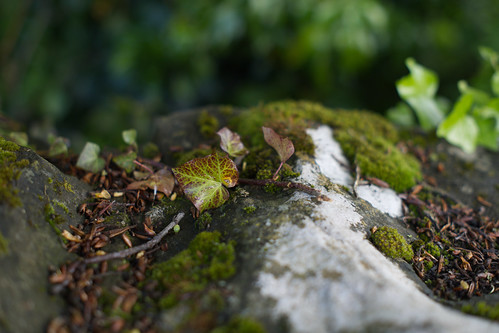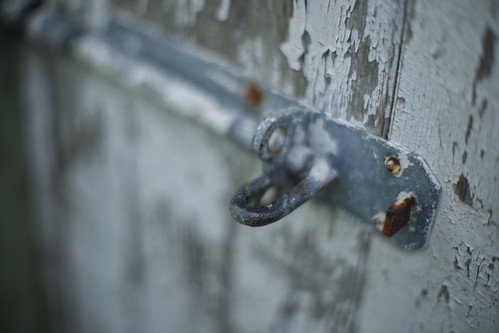
One of the advantages of a mirrorless camera system is that older SLR, rangefinder, and cinema lenses can be readily adapted to the new bodies. This opens up a world of optical possibilities!
This article explains how to adapt lenses and what settings to use on the Lumix S5 to optimise this process. Plus I'll share photos gathered using one of my favourite Pentax K-mount lenses.
Lens mount adapters
Why can use lenses from other camera systems on the Lumix S cameras? Mirrorless cameras get their name from the fact they are lacking the mirror assembly that was required in SLRs. Hence they can be designed to have a short distance from the focal plane, where the sensor sits, to the front of the lens mount. This flange focal distance varies for each camera system, but so long as the lens you wish to adapt is for a camera with a longer distance, you can potentially adapt it to a camera with a shorter distance, by simply making up the difference. A flange adapter is simply a tube of metal made to the correct height, with different lens mounts on each end.
The Panasonic Lumix S line of cameras use the Leica L-Mount, which has a flange focal depth of only 20mm. Other examples of mirrorless systems include Nikon Z, Fuji X, Sony E, and the Micro-Four-Thirds systems. What lenses can we use on these cameras? Well, practically any lenses from the history of photography, including those made by Nikon, Canon, Mamiya, Olympus, etc. Brian Smith has compiled a comprehensive table of camera systems and their flange distances. In my case I will adapt my collection of Pentax K-mount lenses, with their 45.46 mm distance.
In most cases an adapter has no electronic contacts and so no communication can occur between the lens and the camera. But the camera will still be able to monitor exposure through the lens, as the aperture changes. So it will still be easy to get the correct exposure, which is one of the two tasks we need to achieve. The other task is focusing, which will be accomplished by using the focus ring on the lens. No automatic focus here!
Your lens will need its own aperture ring. If you have a lens made for automatic exposure cameras, lacking an aperture ring, you will need a mount adapter with its own aperture control. But a warning: automatic lenses tend to be annoying to focus, because the focus rings were designed to be turned by auto-focus motors, not hands.
Though a flange adapter is a simple accessory, manufacturing tolerances differ. You don't want a wiggly mount or one that will let the lens fall off... both have been known to happen! Some adapters have the opposite problem, gripping a lens so tightly it's impossible to remove them.
Novoflex is the premium brand, with a K-mount to L-mount adapter priced at €170. I decided instead to try one from K&F Concept for €30. It's worked admirably so far. My only criticism is that it doesn't come with an end cap... and the standard Panasonic caps don't fit.
But not all lenses
Just because a lens can physically be adapted for a body doesn't mean that it will perform well. This is because of two related factors. The first factor is the thickness of the sensor stack, the layers of glass and protective material on the camera's sensor. This can vary from 0.5 to 4 mm.
The second factor is an optical characteristic of the lens itself, known as the exit pupil. This dictates where the light focused by the lens has optimal quality. Lenses for a system are designed so that the exit pupil matches physical characteristics such as the flange distance and sensor stack thickness. But when lenses and bodies from different systems are combined, optical mismatches can occur. Symptoms tend to be worse for wide angle lenses and wide apertures. Roger Cicala at Lens Rentals has compiled data on this phenomenon, but it's unclear how to use the raw numbers. Essentially, one has to simply try the lens/camera combination and see the results. Symptoms include excessive vignetting, colour shifting, and loss of detail.
One combination that has been well-tested is the use of classic Leica M-mount glass on the Lumix S series. It makes some sense to do this because Leica and Panasonic are now part of the same alliance, with their L-mount. Won't the older Leica lenses work? They do perform well on Leica's own digital cameras. But that's because the company has put extraordinary effort into ensuring their older lenses do work. The bodies perform hidden software correction and have a thin sensor stack (only 1.2mm on the Leica SL).
The Panasonic bodies have none of this Leica-specific tuning and have a thicker sensor. The result is that Leica rangefinder lenses perform poorly on the Lumix S system. In general, I would expect other rangefinder lenses to similarly be a bad match for mirrorless cameras.
Camera settings
When you turn on the camera with a non-native lens mounted, it will ask you what focal length you are using (and will remember the last setting). This is so that the IBIS can still work accurately. Choose Manual mode on the camera ("M" on the dial). Choose your aperture on the lens and set your ISO on the camera. Then adjust the shutter speed using one of the dials (whichever you have set for this function), in order to balance exposure. If you prefer, you can instead set aperture and shutter speed, having the camera automatically choose ISO.
The Lumix can help you nail focus by magnifying the screen in the area of your focus rectangle. To set this up, go to the menu GEAR > Focus/Shutter > MF Assist. There are three options you can toggle individually. "Focus Ring" increases the magnification as soon as you go to manually focus the lens itself. That won't work here, since there's no coupling, as previously mentioned. The camera has no idea what the lens is doing. This setting is designed for native autofocus lenses that you might nonetheless wish to override to tweak focus. (As I do!)
"AF Mode" uses the AF button (just right of your viewfinder) for this function. "Press Joystick" uses the little black joystick, the one that's too close to your "AF ON" button. Use either or both of these.
The final option allows you to control the display. The magnified part of the image can be either Picture-in-Picture (PIP) or full-screen (FULL). I prefer the latter, since the magnified portion is displayed larger and hence focus is easier.
The camera also has a Focus Peaking function but this works quite poorly. I'll say no more about it here.
Samples from the Pentax fast 50
Yesterday I went out with the "SMC Pentax 1:1.2 50mm", also known as the Pentax-K 50/1.2, to distinguish it from the later Pentax-A version. This is quite a remarkable lens that gets a dreamy look wide open -- certainly not useful for everything -- but then becomes quite useful at f/2. Providing, that is, that you want a tiny sliver of focus.
Here's a boring mug of coffee at f/1.2 and f/2. This is as close as I can get to the subject with this lens. But the 45cm close focus is not bad. This is measured from the focal plane, where the sensor is located. Since the combination of adapter, lens, and hood equals almost 12cm, I can get within 33cm of my subject.


Here's a leafy view in the back garden, at the same two apertures.


And now the bolt on our shed.


These subjects all have various complex textures in the out-of-focus region. Hence this is a torture test for bokeh. I think you will agree that this lens is quite incredible at smoothing the background.
These RAW files were processed through Affinity Photo, with no colour adjustments, slight exposure correction, and a tiny bit of clarity added. Normally I do more, but I wanted this test to show the images right out of the camera.
That's it for A/B comparisons. On my walk I simply shot what I fancied. At the top of this article is another close-up, shot at f/2.
I stopped down for the next vista, swans in our local pond.

And some vegetation, since that's always a good test of rendering.

Using adapted lenses is enormously fun, once you get muscle memory for the manual controls. Many of my film-era lenses are compact. Even with the adapter they are smaller than the native Panasonic lenses.
I have to say that the Lumix S5 makes an excellent platform for restoring old glass to its former glory. perhaps none of the shots in this article are exceptional, but they demonstrate to me the potential for exceptional images, when I get more interesting subjects and contexts.
No comments:
Post a Comment